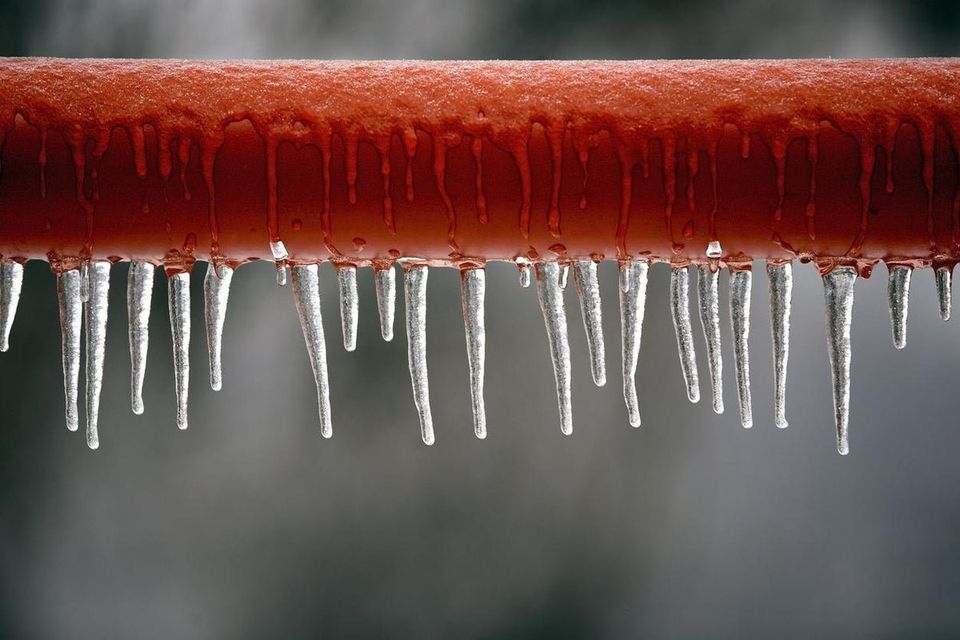Almost everyone may have their own assumption with regards to How To Avoid Freezing Pipes.

Winter can wreak havoc on your plumbing, especially by freezing pipelines. Here's exactly how to avoid it from happening and what to do if it does.
Intro
As temperature levels decline, the threat of frozen pipes boosts, possibly resulting in pricey repair services and water damages. Understanding how to stop icy pipelines is vital for house owners in cold climates.
Comprehending Frozen Pipes
What triggers pipelines to freeze?
Pipes ice up when subjected to temperature levels below 32 ° F (0 ° C) for prolonged periods. As water inside the pipelines ices up, it broadens, taxing the pipeline wall surfaces and potentially creating them to rupture.
Dangers and damages
Frozen pipes can bring about water supply disruptions, property damage, and pricey repairs. Ruptured pipes can flood homes and create comprehensive architectural damage.
Indicators of Frozen Pipes
Identifying icy pipelines early can stop them from breaking.
Just how to identify icy pipelines
Try to find reduced water flow from taps, unusual smells or sounds from pipelines, and noticeable frost on exposed pipelines.
Avoidance Tips
Protecting prone pipelines
Cover pipelines in insulation sleeves or make use of heat tape to secure them from freezing temperature levels. Focus on pipes in unheated or outside areas of the home.
Heating techniques
Keep interior spaces sufficiently heated, particularly areas with pipes. Open closet doors to allow cozy air to circulate around pipelines under sinks.
Safeguarding Outside Plumbing
Yard pipes and outside faucets
Detach and drain pipes garden hose pipes before wintertime. Install frost-proof spigots or cover outdoor faucets with protected caps.
What to Do If Your Pipes Freeze
Immediate actions to take
If you presume icy pipes, maintain faucets open up to relieve stress as the ice thaws. Make use of a hairdryer or towels soaked in hot water to thaw pipelines slowly.
Long-Term Solutions
Structural modifications
Think about rerouting pipelines far from exterior walls or unheated areas. Add extra insulation to attic rooms, cellars, and crawl spaces.
Updating insulation
Buy premium insulation for pipelines, attics, and wall surfaces. Proper insulation assists keep constant temperatures and lowers the threat of icy pipelines.
Verdict
Preventing icy pipelines calls for proactive steps and quick actions. By understanding the reasons, indications, and preventive measures, house owners can shield their pipes throughout cold weather.
6 Proven Ways to Prevent Frozen Pipes and Protect Your Home
Disconnect and Drain Garden Hoses
Before winter arrives, start by disconnecting your garden hoses and draining any remaining water. Close the shut-off valves that supply outdoor hose bibs and leave the outdoor faucet open to allow any residual water to drain. For extra protection, consider using faucet covers throughout the colder months. It’s also important to drain water from any sprinkler supply lines following the manufacturer’s directions.
Insulate Exposed Pipes
Insulating your pipes is an effective way to prevent freezing. Pipe insulation is readily available at home improvement stores and is relatively inexpensive. Pay close attention to pipes in unheated areas such as the attic, basement, crawl spaces, or garage. Apply foam insulation generously to create a buffer against the cold. You can also wrap your pipes in heat tape or thermostat-controlled heat cables for added warmth.
Seal Air Leaks
Inspect your home for any cracks or openings that could let in cold air. Seal any holes around the piping in interior or exterior walls, as well as the sill plates where your home rests on its foundation. Additionally, make sure to keep your garage door closed unless you’re entering or exiting. Leaving it open creates a significant air leak that can lead to frozen pipes.
Allow Warm Air Circulation
During cold snaps, it’s essential to allow warm air to circulate evenly throughout your home. Leave interior doors ajar to promote better airflow. Open kitchen and bathroom cabinets to help distribute heat consistently around the rooms. If you have small children or pets, be sure to remove any household chemicals or potentially harmful cleaners from open cabinets for safety.
Let Faucets Drip
A small trickle of water can make a big difference in preventing ice formation inside your pipes. When temperatures drop significantly, start a drip of water from all faucets served by exposed pipes. This continuous flow helps prevent the water from freezing. Additionally, running a few faucets slightly can relieve pressure inside the pipes, reducing the chances of a rupture if the water inside does freeze.
https://choateshvac.com/6-proven-ways-to-prevent-frozen-pipes-and-protect-your-home/

Do you appreciate reading about How to Prevent Your Pipes From Freezing? Create a remark further down. We will be happy to listen to your reactions about this write-up. Hoping to see you back again before long. Kindly pause to distribute this blog if you enjoyed it. I cherish your readership.
Schedule Free Estimate
 Judge Reinhold Then & Now!
Judge Reinhold Then & Now! Melissa Joan Hart Then & Now!
Melissa Joan Hart Then & Now! Sam Woods Then & Now!
Sam Woods Then & Now! Soleil Moon Frye Then & Now!
Soleil Moon Frye Then & Now! Lucy Lawless Then & Now!
Lucy Lawless Then & Now!